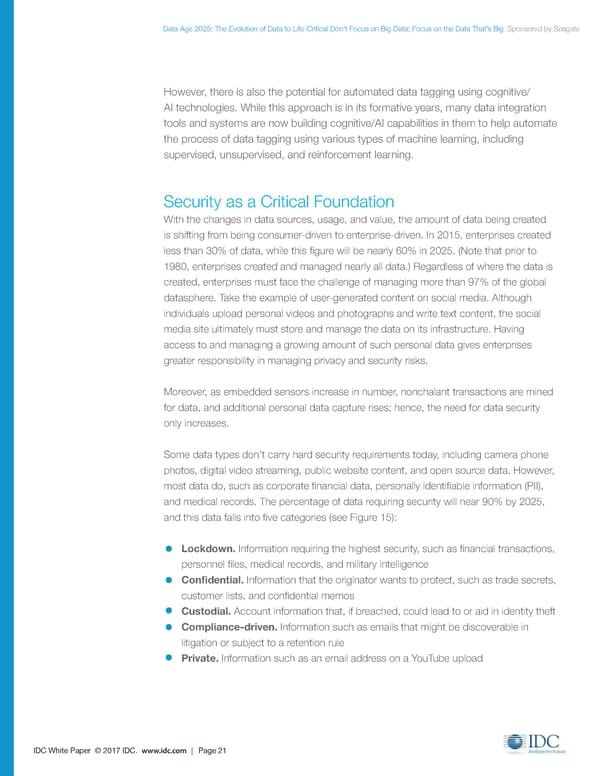Data Age 2025: The Evolution of Data to Life-Critical Don’t Focus on Big Data; Focus on the Data That’s Big Sponsored by Seagate However, there is also the potential for automated data tagging using cognitive/ AI technologies. While this approach is in its formative years, many data integration tools and systems are now building cognitive/AI capabilities in them to help automate the process of data tagging using various types of machine learning, including supervised, unsupervised, and reinforcement learning. Security as a Critical Foundation With the changes in data sources, usage, and value, the amount of data being created is shifting from being consumer-driven to enterprise-driven. In 2015, enterprises created less than 30% of data, while this figure will be nearly 60% in 2025. (Note that prior to 1980, enterprises created and managed nearly all data.) Regardless of where the data is created, enterprises must face the challenge of managing more than 97% of the global datasphere. Take the example of user-generated content on social media. Although individuals upload personal videos and photographs and write text content, the social media site ultimately must store and manage the data on its infrastructure. Having access to and managing a growing amount of such personal data gives enterprises greater responsibility in managing privacy and security risks. Moreover, as embedded sensors increase in number, nonchalant transactions are mined for data, and additional personal data capture rises; hence, the need for data security only increases. Some data types don’t carry hard security requirements today, including camera phone photos, digital video streaming, public website content, and open source data. However, most data do, such as corporate financial data, personally identifiable information (PII), and medical records. The percentage of data requiring security will near 90% by 2025, and this data falls into five categories (see Figure 15): • Lockdown. Information requiring the highest security, such as financial transactions, personnel files, medical records, and military intelligence • Confidential. Information that the originator wants to protect, such as trade secrets, customer lists, and confidential memos • Custodial. Account information that, if breached, could lead to or aid in identity theft • Compliance-driven. Information such as emails that might be discoverable in litigation or subject to a retention rule • Private. Information such as an email address on a YouTube upload IDC White Paper © 2017 IDC. www.idc.com | Page 21
 Data Age 2025: The Evolution of Data to Life-Critical Page 20 Page 22
Data Age 2025: The Evolution of Data to Life-Critical Page 20 Page 22